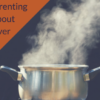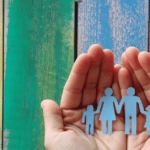
Ease the New Sibling Transition With Preparation & Loads of Grace
Spoiler alert: It doesn’t have to cause resentment!
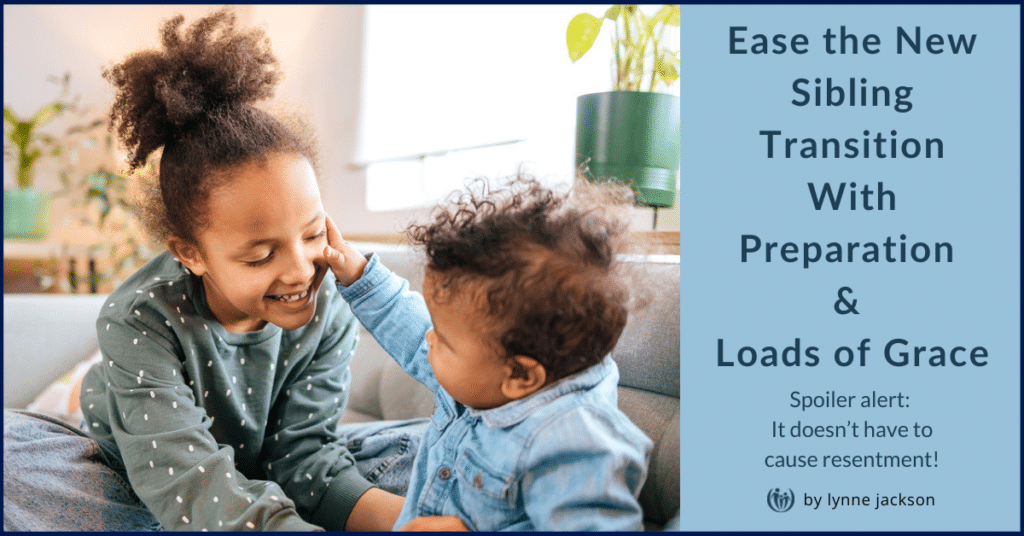
Adding a new sibling can be a rough transition for the whole family, especially for children. You may dream of how fun it will be to see your kids playing and exploring the world together, and that could be how it goes, but when the little darling actually arrives, the new sibling transition might be tough! Initially, the baby (or older child!) may represent competition for attention, and then once mobile – competition for toys!
The stress of adding a sibling isn’t only about the new sibling. Research found that the security of attachment of the firstborn to the parent decreases when a new sibling is added! Parents’ responses to the older child are part of the reason. Researchers found that parents’ rules, confrontation, and harsh discipline increased significantly. Research also showed decreased playfulness! That in and of itself is enough to cause a child to struggle.
However, you can take heart that the same research also suggests that if a child struggles with adjusting to a new sibling, these dynamics rarely become a permanent issue. (Things usually ease up in about four months when the baby smiles and giggles at the antics of an older sibling.)
But when adding a new sibling, the goal isn’t simply to just “get through it” as you limit jealousy and aggression. Set your sights on growing character qualities of compassion and responsibility in your older child that will equip them well for life!
The Connected Families Framework gives insight into this. We will briefly review each principle and then look at some practical examples from families in the CF community.
FOUNDATION: What’s going on in me during a new sibling transition?
Understanding the complexity of adding a new sibling is challenging because sin nature (in everyone) mixes in with a lot of stress, insecurity, lack of routine and sound sleep, etc. At Connected Families, we believe the most effective way to guide a child toward repentance from sinful actions is to model that ourselves.
“What’s going on in me?” is a great starter “Foundation” question. When protecting a vulnerable infant, it’s easy to have an overly zealous “Mama Bear” reaction. But if you engage with anxious, angry “This needs to stop NOW!” thoughts, your reaction can cause a child to feel replaced, rejected, and opposed, likely aggravating the problem.
As you engage more thoughtfully, a helpful Foundation shift is to change your focus from what you’re trying to prevent to what you’re trying to nurture, from managing behavior to mentoring your child’s compassion. This is a lifelong gift to your child!
“Therefore, as God’s chosen people, holy and dearly loved, clothe yourselves with compassion, kindness, humility, gentleness, and patience.” Colossians 3:12
This verse makes it clear that knowing you are dearly loved is what prepares you to love others compassionately. This is true for parents and kids!
This leads to a second “Foundation” question, “What’s it like to be my child as a new little one joins our family?” Does your child still feel dearly loved? Maybe when your child is struggling, you can share that verse and ask, “You seem to be having a hard time right now; how could I help you remember that you are loved soooo much?!”
Thoughtfully stepping into your child’s shoes prepares you to connect well…
CONNECT: How can I better connect when there is a new sibling?
Empathy goes a long way in decreasing sibling issues because it helps maintain that secure attachment with your older child when they feel threatened. (“Mom and Dad care about me and understand me!”)
What losses and disappointment might your child be experiencing? How might you provide space for your child to talk about that – maybe at bedtime? “Are you worried we won’t be as close now that the baby has joined our family?” “Are you sad that Mommy is so busy with the baby?”
Another key element of Connect is delight. In what ways have you seen your love and delight in your child truly land on their heart? How might you intentionally increase, not decrease, those kinds of interactions?
If you want to try something new, power reversal play can also provide a healing connection and relief to a child who feels like life is out of control. The child plays the strong, smart, even superhero role while the goofy adult is weak, clumsy, or fearful. It can be loads of fun and excellent for helping a child embrace the belief: “I’m a confident, competent big kid! And Mom or Dad is delighted to play with me; I haven’t been replaced!”
Another helpful kind of play is “regression play,” where you give an older child complete freedom to pretend they are a baby. Ask if they want to do big-kid, be-the-hero play, or be-the-baby play. If they choose the latter, you can snuggle in a rocking chair, feed them, coo at them, and talk baby talk together. In most cases, this decreases manipulative baby talk and pretend helplessness because it takes the power struggle out of acting like a baby and reassures them they are just as precious as the tiny new intruder.
COACH: You are capable of helping with the new sibling
This is where kids get some responsibility for the logistics of welcoming a new baby. You also nurture their God-given compassion, capability, and calling to serve. You’ll see numerous examples in the stories below, especially about how to prepare a child before their sibling joins the family.
One of the great opportunities for a new sibling is that because babies can’t speak for themselves, identifying their emotions can be a fun challenge for the older child. It can have a profound impact: When infants were brought into public school classrooms, schoolkids watched and identified the babies’ emotions. Bullying decreased as children learned empathy and compassion.
Build skills outside of crisis time. Let your child know that if they have big feelings and think they want to hurt the baby, they can come to you, and you will snuggle with them in a favorite spot. You could even playfully practice that so they go through the physical action of coming to you and asking to snuggle. Be sure to encourage your child about how their wise request for snuggle time will help their hands be safe around the baby.
CORRECT: When things go awry with a new sibling transition
Even with all this proactive work, things can still go awry. “It’s NOT okay to hit!!!” delivered with a stern-faced glare is probably not helpful information to your older child. If there is roughness or aggression:
- Pick up your baby quickly!
- Put your initial focus on soothing the baby as you allow the natural impact of the aggression to land on the older child without accusing them.
- Engage in a calming, non-judgmental connection with both kids. “Oh, you’re both so upset! This is hard!”
- Ask relaxed, curious “I wonder” statements to help your child gain emotional awareness. “I wonder if the baby had words coming out of her mouth instead of cries, what might she say?” You can also act out what happened with dolls or stuffed animals and ask questions about what the animals are feeling and how to fix the situation.
- If you sense your child’s heart softening, you could invite them to get a blanket, pacifier, or toy for the baby. This is the start of developing the values and skills to “make it right” when a child has hurt someone.
The goal is to help the older child develop compassion, which is the most likely way to decrease conflict moving forward.
We have three stories for you from families in very different situations. Each story has lots of practical ideas to smooth the addition of a new sibling. Read all three, or jump to the one that best fits your situation:
- Birth of a new sibling
- An older child welcomed through adoption
- A child welcomed through foster or kinship care
Welcoming the birth of a new sibling
Corey and Andrea had a 2 ½-year-old daughter, Lynnea, and a son on the way. They needed to move Lynnea out of the crib into a new bed and bedroom farther from her parents. Andrea shared her story with us.
Before the baby arrived…
- We celebrated Lynnea often. We bought her a “Big Sister” T-shirt, played with her in her new bedroom, and bought her a baby doll to play with.
- We read stories to Lynnea about becoming a big sister: Waiting for Baby, I’m a Big Sister, and So You’re Going to Be a… Big Sister
- Friends and family got excited and often talked with Lynnea about all the transitions. “Let me see your new bedroom – woah! Do you get to sleep in a big-girl bed? Wow! That’s amazing, show me! You’re going to be such a great big sister!”
- We used visuals (such as the “candle activity”) to explain to Lynnea that she wouldn’t get less love; our family’s love would grow with the new baby!
When the baby arrived…
Lynnea used to wake up, walk around the corner into our room, and crawl into bed with us for some morning snuggle time. Now, she was walking up a long flight of stairs by herself, down the hall, and into our room only to find the baby there! We worked to ensure that she still felt special and loved:
- We involved her a lot in Austin’s care. She loved helping with bath time and getting his blanket, pacifier, diaper, or burp rag!
- We set aside special time for undivided attention. To make this happen, we sometimes requested help with Austin and said yes whenever others offered.
- We adjusted our expectations. Overall, Lynnea did really well, but we expected that as a 2 ½-year-old, she would still need lots of help and attention.
By the time Austin was four months old, our dreams of a sweet connection were beginning to become reality. “Let’s all kiss him together, Mom!” exclaimed Lynnea. Our whole family bent down to kiss little Austin. “He’s goo-ing at me, Mom, he’s goo-ing at me!” She beamed with joy.
When Lynnea was eight years old and Austin was five, sibling conflict was definitely an issue, but they thoroughly enjoyed each other. Austin’s teachers told us, “He adores his big sister and talks about her regularly.”
Now, at 16 and 13 years old, they’ve really “got each others’ backs.” Lynnea loves Austin’s laugh, and Austin likes when Lynnea “shares knowledge that she knows.” Like all siblings, they are learning a lot about how to solve problems through their own regular conflict. They even do the Peace Process on their own sometimes! You can learn more about the Sibling Conflict online course that Andrea and Corey took here.

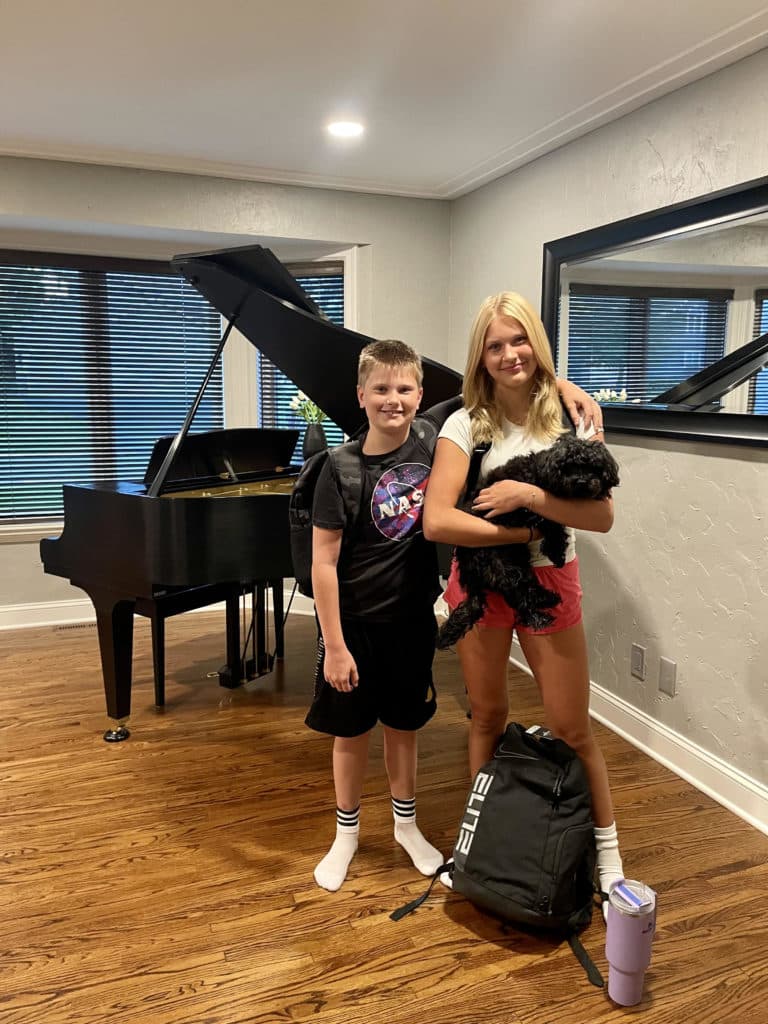
Austin and Lynnea, ages 10 and 13
Welcoming an older child through adoption
John and Jen welcomed sibling girls (ages 7 and 9) into their family through adoption. Much of what they did to prepare their four older children is similar to how a family would welcome any sibling, but there were undoubtedly some unique differences. Jen shared her story with us.
We were excited about growing our family through adoption but knew that could present some challenges for our biological kids. We wanted them to be prepared for the potentially difficult new sibling transition, so we tried to be as open and proactive as possible before the girls came home.
All children who join families through adoption have experienced some type of trauma, and even the transition to a new, safe environment can cause trauma. We helped our older kids understand that because of trauma, the brains of their newest siblings would likely be wired differently than children who had not experienced adoption.
Before the children arrived…
- After reading numerous books on the topic and taking more than one recommended webinar about preparing siblings for adoption, we did our best to explain to our four older children (ages 10 to 16) what might happen when their new little sisters arrived.
- We tried to prepare them for some of the challenges we would face as a family. There would be language barriers to work through and deep anxiety and fear about being in a new family.
- We encouraged empathy by having the kids imagine how it must feel to move from everything you’ve known, leaving friends and caregivers, to a place where everything and everyone is unfamiliar – new sights, smells, experiences, and much much more, including moving from a tropical climate to winter in Minnesota!
- During meals, we made an effort to have them think about what it would be like to sit around a table with people you didn’t know, who were speaking a language you didn’t understand, and be asked to eat food you’d never tasted. Several of us also studied the language of our daughters to help ease the transition.
After the girls arrived…
Grace. Grace. And more grace. Learning about all the challenges ahead of us took on a new feel when those challenges became a reality. Once the excitement of the airport arrival wore off, it was necessary to “check in” frequently with each of the four big siblings as much as possible:
- We would individually ask each of the kids how they felt about everything and made sure to validate their feelings and frustrations. This strengthened open lines of communication.
- Because of the girls’ trauma, we explained that we needed to parent the girls differently. This helped the older kids understand why we responded to some of the girls’ behaviors using an attachment or therapeutic parenting approach.
- We looked for opportunities to affirm the older kids’ efforts to make the girls feel welcome.
- It was important to carve out special time with our older children. After their new sisters were in bed, we often watched a favorite TV show. One of our daughters, who was struggling with our family’s “new normal,” expressed a lot of interest in watching old home movies, so we did this whenever we had a chance.
We messed up a lot, and it is still a struggle to continually make sure everyone feels loved and cared for. But through these mistakes, we are constantly reminded of the depth of God’s grace for us and how he loves us unconditionally.
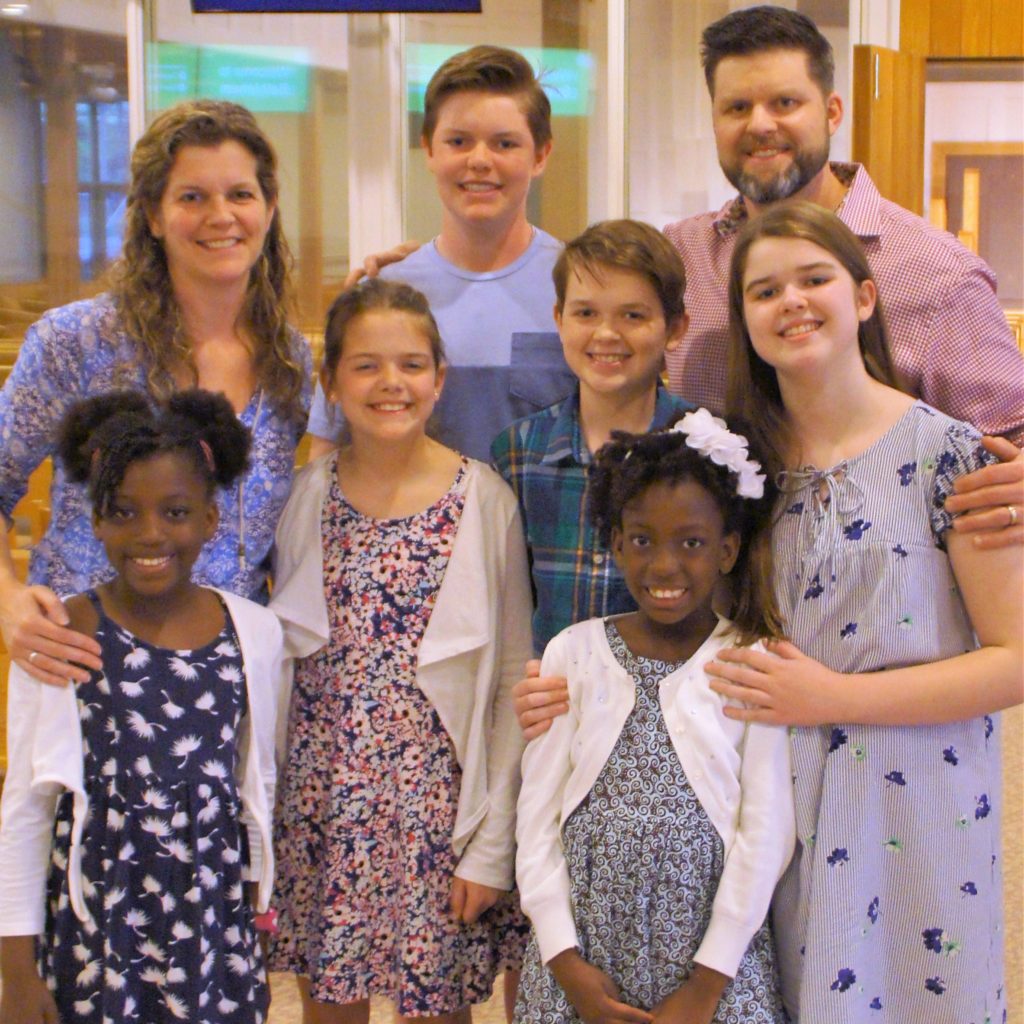
Welcoming a child who might not stay (i.e., foster or kinship care)
Foster and kinship care families often receive a child with little warning who is arriving in the middle of trauma from an emergency situation. The emergency happens, and the child is suddenly in your home, siblings unprepared. This is very stressful for everyone, so thoughtful preparation ahead of time is essential.
Brittany and Kevin began fostering when they already had four children ages 3-8. They knew every child who came into their home would bring a unique dynamic to the family. They did what they could before foster children arrived to prepare their kids for the arrival of “siblings,” whose stay would most likely be temporary. Here’s their story.
Throughout the foster care training, paperwork, and preparation, we involved the kids in all possible ways. Decluttering together to make more space and empty drawers took on new effort and meaning.
We did our training class in one room and let them have a fun movie night in another room. Occasionally, our class dealt with sensitive topics surrounding trauma and abuse, and sometimes, we would share what we were learning when it was appropriate. After we were approved, we discussed what that meant at one of our family meetings and continued to allow every question and concern.
When we received a call about a foster child, Kevin and I would discuss if it made sense for right now with our family. Sometimes, it was an easy yes, and sometimes we said no because of something our other children needed. Once, we said no because one of our children asked us to. Being receptive and honoring was important to us. They don’t run the family, but if this is a calling we are in together, the Holy Spirit in them can bring wisdom and insight, too.
One good family habit that we started from the beginning was finishing every placement with ice cream, no matter the length or how it went. It helps heal a broken-hearted goodbye, or it can celebrate getting through a really hard experience.
We had a baby come into our family through foster care who we adopted 18 months later. There were lots of awkward moments as the kids had questions, met his biological family members, and had normal sibling frustration. Adding to your family through foster care can be confusing and uncomfortable, and we found it best to embrace the discomfort with honesty, compassion, and connection.
Our son’s adoption party was the biggest ice cream sundae bar ever! The kids picked the ice cream toppings and invited anyone they felt supported them as we fostered and adopted our little man. We continue to field awkward questions regularly. The days can be pretty difficult, and we work through the Peace Process with our kids about our toddler messing up their stuff.
We didn’t expect to adopt out of foster care, and it certainly wasn’t perfect, but this twist in our journey has had lots of sweetness, too, as we saw God’s love grow in our family. We’ve learned to offer ourselves grace upon grace!
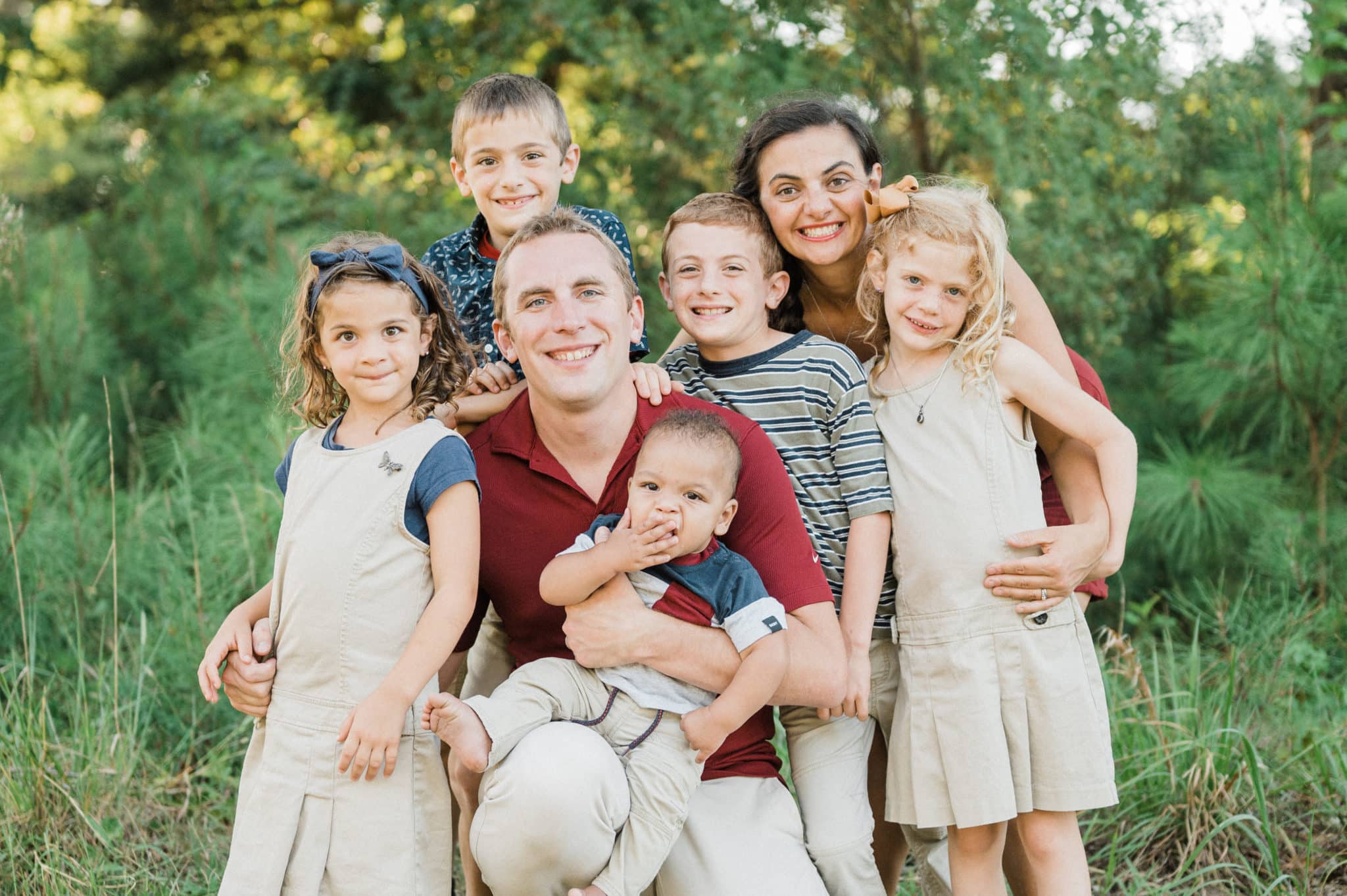
Brittany and Kevin and their growing family.
The bottom line: Grace upon grace for the new sibling transition!
But be prepared for failure. You will never get everything “right,” and even if you could, you may have a sensitive or intense child who really struggles with this kind of new sibling transition more than you expect. They’re not being selfish; this child simply needs you in a deeper way and will require more patience and time to adjust.
Whether you add to your family through birth, adoption, or foster care, it is important to prepare other family members for this huge change. When you make an effort to connect well with each child during a stressful time, it can reap lifelong benefits!
Leading with grace and empathy means giving these things freely to everyone in your family…including yourself!
So, let’s end where we started: When adding a new sibling, the goal isn’t simply to limit jealousy and aggression and just “get through it.” Set your sights on growing character qualities of compassion and responsibility in all your children that will equip them well for life!
“Therefore, as God’s chosen people, holy and dearly loved, clothe yourselves with compassion, kindness, humility, gentleness, and patience. Bear with each other and forgive one another if any of you has a grievance against someone. Forgive as the Lord forgave you. And over all these virtues put on love, which binds them all together in perfect unity.” Colossians 3:12-14





